EU: Between an American Rock and a Russian Hard Place
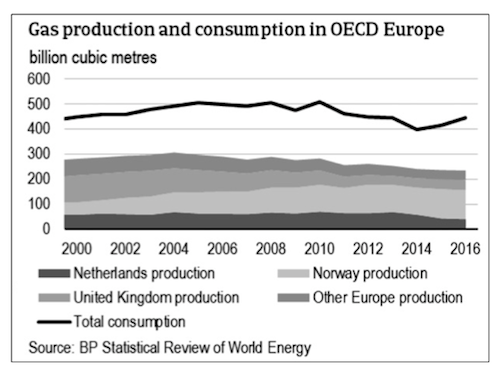
At this moment, shipped and regasified American LNG stands at a higher price than Russian piped gas. Are there any reliable, affordable alternatives available to Nord Stream 2?


At this moment, shipped and regasified American LNG stands at a higher price than Russian piped gas. Are there any reliable, affordable alternatives available to Nord Stream 2?


Electricity is at the heart of modern life, and so it’s easy to assume that our reliance on electricity will increase or even accelerate. However, in many advanced economies the data reveals a surprisingly different story.
Electricity demand has increased by around 70% since 2000, and in 2017, global electricity demand increased by a further 3%. This increase was more than any other major fuel, pushing total demand to 22 200 terawatt-hours (TWh). Electricity now accounts for 19% of total final consumption, compared to just over 15% in 2000.
Yet while global demand growth has been strong, there are major disparities across regions. In particular, in recent years electricity demand in advanced economies has begun to flatten or in some cases decline – in fact electricity demand fell in 18 out of 30 IEA member countries over the period 2010-2017. Several factors can account for this slowing of growth, but the key reason is energy efficiency.
There have been a range of new sources of electricity demand growth in advanced economies, including digitalization and the electrification of heat and mobility. However savings from energy efficiency have outpaced this growth. Energy efficiency measures adopted since 2000 saved almost 1 800 TWh in 2017, or around 20% of overall current electricity use.
Over 40% of the slowdown in electricity demand was attributable to energy efficiency in industry, largely a result of strict, broadly applied, minimum energy performance standards for electric motors. In residential buildings, total energy use by certain classes of appliances has already peaked. For example, energy use for refrigerators (98% of which are covered by performance standards) is well below the high point reached in 2009, and energy use for lighting has also declined. In the absence of energy efficiency improvements, electricity demand in advanced economies would have grown at 1.6% per year since 2010, instead of 0.3%.
Changes in economic structure in advanced economies have also contributed to lower demand growth. In 2000, around 53% of electricity demand in the industrial sector came from heavy industry, but by 2017 this figure had fallen to less than 45%. Advanced economies now account for 30% of global steel production, for example, down from 60% in 2000, and for 25% of aluminium production, also down from around 60% in 2000.
Finally, electricity demand for heat and mobility increased by only 350 TWh between 2000 and 2017. Today, electric cars represent only 1.2% of all passenger vehicle sales in advanced economies and account for less than 0.5% of the passenger vehicle stock. Since 2000, only around 7% of households in advanced economies have switched from fossil fuels (mainly gas) to electricity for space and water heating purposes, and use of electricity for meeting heat demand in the industrial sector remains marginal. In many regions, the price of electricity relative to fossil fuels limits its competitiveness for heating end-uses.
When we look to the future, the pace of electrification is set to pick-up somewhat in advanced economies. Nonetheless, electricity demand growth is projected to remain sluggish in the IEA’s New Policies Scenario (NPS), as improvements in energy efficiency continue to act as a brake on increasing demand for many end-uses. In addition, fewer purchases of household appliances (most households in advanced economies today own at least one of each major household appliance such as refrigerators, washing machines and televisions), and a shift from industry to the less electricity-intensive services sector, all contribute to lower electricity demand growth.
On average, electricity demand in advanced economies is projected to grow at just 0.7% per year to 2040 in the NPS, with the increase largely due to digitalization and policies that incentivise the use of electric vehicles and electric heating. Without those policies, electricity demand would continue to flatten or even decline in many advanced economies.
There are other factors at play. For example, population growth in many advanced economies is barely exceeded by electricity demand growth, meaning that further growth in GDP per capita does not lead to an increase in electricity demand per capita (as an exception, the industry sector in Korea accounts for a large share of electricity demand, and so it is one of the few advanced economies that sees industry contribute to overall electricity demand growth on a per capita basis).
Ultimately, despite moderate growth in electricity demand, fuel-switching to electricity and energy efficiency improvements in the use of other fuels mean the share of electricity in final consumption is projected to increase to 27% in advanced economies by 2040, up from 22% today.

“Competition from pipelines and renewables is fierce, costs are still high, and the large scale of the natural gas system is causing bottlenecks”, says Yang Hua, chairman of Cnooc. “Some LNG suppliers insist on traditional methods of duration and pricing, and resolution of this will require a joint effort”.
China, particularly its coastal areas, is a good example of how quickly LNG uptake can accelerate. Last year 21 receiving terminals imported LNG to help power the country’s towns and cities, drawn from a diverse portfolio of 25 countries.
The country is also expanding its LNG import and distribution infrastructure. The ministry of transport plans to quadruple the country’s import capacity within the next two decades from its 21 terminals with 2.86tn ft³/yr (or 221.7mn m³/d) capabilities to 34 terminals with over 11tn ft³/yr (or 852.9mn m³/d).
But as the LNG industry targets further expansion into emerging markets in south and southeast Asia, the speakers said lessons also need to be learned from China’s experience.
“LNG demand growth may be subject to price constraints — only acceptable LNG prices lead to sustainable growth”, says CNPC chairman Wang Yilin. “Flexibility in trade needs to be strengthened, as more flexible contractual terms will lead to greater liquidity. Suppliers and vendors must jointly support innovation to promote the stability of the market.”
Yong also highlighted the importance of LNG to his city of 24mn people, with the same caveats over future growth.”For a long time, LNG was constrained by the high cost of its storage and transport. A global LNG market has yet to form and the pricing mechanism does not reflect fundamentals yet,” says Yong. The LNG industry needs to work together to reduce costs and improve its competitiveness against other fuels, the mayor adds.

LONDON (Bloomberg) — Royal Dutch Shell’s position on climate change is misaligned with about half of the trade associations it’s a part of, and the disagreement with one is so severe the company will let its membership lapse next year.
The findings were issued in a first-of-its-kind report on whether the company’s association with lobbying groups is undermining its work on climate change. The report is likely to reverberate across the industry, with most of Shell’s peers also members of the same groups and already facing enormous pressure from shareholders to line up their business models with the Paris climate accord.
Shell will leave the American Fuel & Petrochemical Manufacturers association next year because of its climate-change policy stance. It also named nine other groups that it disagrees with, including the powerful American Petroleum Institute and the U.S. Chamber of Commerce, but said it will “engage further” with them.
Organization – Area of Misalignment
American Fuel & Petchem Manufacturers Paris accord, carbon pricing American Chemistry Council Methane rules American Petroleum Institute Methane rules, Clean Power Plan, Paris accord BusinessEurope Carbon trading reform Canadian Association of Petroleum Producers Paris accord, carbon pricing European Chemical Industry Council Carbon trading reform FuelsEurope Carbon trading reform National Association of Manufacturers Carbon tax, CAFE standards, Clean Power Plan U.S. Chamber of Commerce Paris accord, carbon pricing, Clean Power Plan Western States Petroleum Association Carbon pricing, “lobbying approach”
“The publication of this report is a first step to greater transparency around our activities in this area,” Shell said in the report. “Shell’s investors, and more broadly civil society, must be confident that we engage constructively with others on climate change.”
Trade associations have long been a target of environmental activists who support tougher regulation on the industry. Following investor pressure, Shell said last year it would prove through greater reporting that it isn’t funneling money into institutions that hinder progress on cutting greenhouse-gas emissions.
Of the nine groups it’s misaligned with but will stay a member, Shell only disagrees with some of their positions. For example, it said the API fought to repeal rules around methane emissions in 2017, while the company wanted those to stay.
Shell said it found a “material misalignment” with the American Fuel & Petrochemical Manufacturers, something it cannot rectify. Unlike Shell, the group neither supports carbon pricing or hasn’t publicly supported the goal of the Paris accord, the Anglo-Dutch oil major said.
AFPM works on “myriad issues” for its members, and “like any family, we aren’t always fully aligned on every policy, but we always strive to reach consensus positions on policies that are in the best interest of our membership and the communities and consumers that rely on us,” Chet Thompson, the group’s CEO, said in an emailed statement.

Deep sea mineral exploration is one of the most tightly regulated activities in the ocean. Under international law, exploration, as distinct from marine scientific research (which is open to all States), may only be undertaken under a contract with the International Seabed Authority (ISA), an intergovernmental organization based in Jamaica and established by the 1982 United Nations Convention on the Law of the Sea (UNCLOS).
UNCLOS – the ‘constitution for the oceans’ – took the important step of setting aside the deep seabed beyond national jurisdiction and its mineral resources as the ‘common heritage of mankind’. It gave the ISA the exclusive mandate to manage deep sea mineral resources for the benefit of mankind. As a result, the deep-sea mining regime in UNCLOS is the most innovative legal regime ever designed by humankind for the equitable and sustainable use of natural resources.
This carefully balanced but comprehensive legal regime was created to prevent a scramble for resources by technologically advanced countries in the deep sea, and to ensure that scientific research, exploration and exploitation would benefit all of humanity. It was developed to ensure mining the deep sea wouldn’t take place on a first-come, first-served basis, but rather it would fall under international management with clear global environmental standards.
Over the last 25 years, ISA has developed a comprehensive set of rules dealing with exploration for deep sea minerals. With increasing regulatory certainty, combined with rising mineral prices as demand for so-called ‘green metals’ (the metals needed to support the low-carbon transition such as copper, cobalt and nickel) surges, commercial interest has grown rapidly, particularly over the past five years. Presently, there are 29 active mineral exploration projects in the deep seabed, involving 22 different countries. Commercial exploitation was attempted in the 1970s on a small scale, but has not yet taken place, primarily due to the lack of agreement on international regulations.
Last week, a major step forward took place with the release by the ISA’s Legal and Technical Commission, a 30-member expert body, of its proposals for a draft Mining Code that would allow for commercial exploitation of deep-sea minerals. The Mining Code, which has so far taken five years to develop, including several rounds of global stakeholder consultation, will permit exploitation of the deep sea in a way that balances the need for minerals with rigorous environmental protection. The Code will require States or mining companies planning to undertake activities in the international seabed area to carry out prior environmental impact assessments, abide by stringent environmental criteria and account for continuing compliance through oversight by independent entities. Unlike comparable activities within national jurisdiction (i.e., up to a country’s 200 nautical mile on the continental shelf), which are subject to national regulation which may vary from country to country, these standards are applicable globally.
A unique feature of the regime is that it will require a portion of the financial rewards from mining to be paid to the ISA and then shared with developing countries according to ‘equitable sharing criteria’. How big those rewards will be, and how much revenue will in turn flow to the ISA, is still to be decided. In any case, it is likely that profits will be slow to roll in during the early years of exploitation, mainly as a result of the high capital costs of designing and building the specialized ships and collector vehicles that will be needed.
A big challenge here is the question of how to tackle the problem of distributing the financial rewards. UNCLOS calls for, but does not define, equity, a complex idea that resists simple formulations. For many States, the fact that deep-sea mineral resources are the common heritage of mankind suggests a redistribution of income from wealthier States to poorer States, particularly least developed and landlocked States. Others have suggested that intergenerational equity would be better served by the creation of a resource fund, like a sovereign wealth fund, that could be used to support global sustainable development goals.
The Mining Code will be reviewed by the ISA Council in July 2019. The Council, which is made up of 36 member States, has set itself a target of 2020 to finalize the Code. It is important to get it right, and it is true that complex, political, economic, technological, scientific, environmental, social, industrial and legal aspects need to be sensitively addressed to achieve a commercially viable and socially responsible industry. Nevertheless, I can think of no other activity in the ocean where we have had the chance to put the rules into place before the activity has occurred, and we should take every advantage of this opportunity.

With 28 years of experience as a public international lawyer, Michael W. Lodge has a strong background in the field of law of the sea as well as ten years’ judicial experience in the UK and South Pacific. He has extensive knowledge of the United Nations and other intergovernmental organizations and has facilitated high-level multilateral and bilateral negotiations at international and regional level. Mr. Lodge’s significant achievements include his pivotal role in ISA from its inception in 1996 and in helping to create and implement the first international regulatory regime for seabed mining. Mr Lodge has published and lectured extensively on the international law of the sea.

Driven by a history of political lobbying and high-performing growth margins, the oil and gas industry accounts for around 3% of global GDP and more than 50% of global emissions associated with energy consumption.
This history has come at the expense of the environment; a new Friends of the Earth report published as recently as this week concluded that the sector is responsible for £44bn worth of costs through environmental damage, negative social impacts and healthcare spending annually.
However, the energy sector is faced with an unprecedented transition and – whether driven by economic opportunities or an understanding of climate impacts – the major players in the sector are starting to align to a low-carbon transition.
Faced with an adapt-or-die outlook, several of the industry’s largest companies have unveiled fresh carbon ambitions, low-carbon investment schemes or updated energy projections in recent months. With this in mind, edie is examining the precise commitments and actions seven of the world’s largest energy firms have made to adapt to the low-carbon transition.
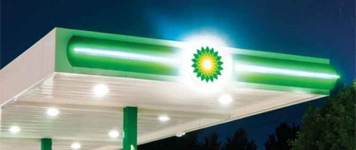
Pledges: BP is striving to generate reductions of 3.5m tonnes of CO2 equivalent annually throughout the business by 2025 as part of its Advancing the Energy Transition (AET) strategy. Launched in April 2018, BP claimed the strategy would help it to keep net greenhouse gas emissions at 2015 levels as the business expands. Following pressure from investors, the firm has additionally pledged to align its business with the aims of the Paris Agreement and link staff bonuses to decarbonisation.
Energy outlook: Published in February, BP’s latest energy outlook report predicts that renewables will account for 30% of global electricity supply by 2040 – up from just 10% in 2018. The figure is an increase on 2018 predictions, which set the 2040 proportion for renewables at 25%.
Low-carbon investments: Last year, UK-based BP returned to solar power with the $200m investment in solar developer Lightsource and made a further major investment in rapid charging points for electric cars at its petrol stations. The move came after BP launched a ‘target zero’ campaign in the UK to encourage its customers to offset their vehicle emissions.
BP also pledged in 2018 to invest a further $500m in low-carbon projects and technologies by the end of 2019, but has yet to post a progress update on this commitment. A further $100m investment in upstream oil and gas emissions reductions projects has since been announced. To put these figures into context, the firm’s full-year underlying profits were $6.2bn in 2017 and is estimated to spend around $30m annually on climate-focused branding and communications.
Policy lobbying: BP has long been targeted by climate activist groups for its continued reliance on crude oil, and for lobbying the Australian government not to sign the Kyoto Protocol unless the US did in the 1990s. More recently, BP has faced accusations that it donated $13m to a campaign that successfully stopped a carbon tax being implemented in Washington state – $1m of which was spent on social media advertising.
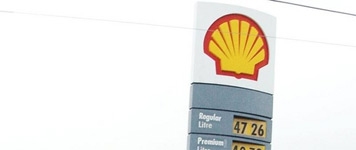
Pledges: Building on its commitment to reduce the carbon footprint of its energy products by 20% by 2035, rising to 50% by 2050, Shell pledged in December 2018 to set shorter-term targets every three to five years, starting in 2020. Effective as of 1 January 2019, the first of these short-term commitments is to deliver a 2-3% reduction of the company’s overall carbon footprint against a 2016 baseline. The company is also aiming to reduce the methane emissions intensity of its operations to below 0.2% by 2025.
In order to deliver these results, Shell has been promising to set a science-based target since 2015 and has begun to align low-carbon action with executive pay.
Energy outlook: In the wake of the Intergovernmental Panel on Climate Change’s landmark report, Shell recently stated that it “agrees” with the need to “transform” the global economy to achieve a 1.5C pathway.
Its most recent energy outlook states that global demands for oil and gas will be higher in 2030 than today – but that the share of oil, gas and coal in the overall energy system will fall as more renewables come online. Specifically, it states that even in the “most rapid” low-carbon transition, oil and gas demand will grow 1% per year from 2020-25 before peaking mid-decade and falling 1% per year between 2026-40. The company is currently aligned with this scenario, which it claims is in line with a 2C trajectory.
Low-carbon investments: The Dutch firm committed in 2018 to spend $1bn-$2bn annually on clean energy projects and research by 2020, with the rest of its total $25bn budget invested in hydrocarbons. It has begun assessing the feasibility of doubling this budget again to $4bn (£3.2bn).
So far, Shell has installed rapid electric vehicle (EV) charging points and hydrogen cell refuelling facilities at some of its petrol station forecourts. The company has also invested heavily in a number of smaller low-carbon ventures in recent times as it seeks to green its portfolio, including onsite renewables firm Cleantech Solar, smart energy storage startup Sonnen, EV charging network NewMotion and ‘virtual power plant’ host Limejump. It additionally spends around $53m on climate-related communications each year.
However, the firm confirmed in 2018 that it would re-invest in North Sea projects for the first time in six years – a move that will increase its UK oil production by a third.
Policy lobbying: Shell has faced widespread criticism for failing to reveal that its own research, carried out in 1988, had predicted the global damage that would be done by its fossil fuel projects – and for investing $49m in climate lobbying annually.
But in recent times, the company has publicly called for the introduction of a stricter carbon tax and greater policy support for wind power. Shell is a member of The Carbon Trust’s Offshore Wind Accelerator (OWA) scheme, for example, which sees businesses commit to funding research and development of technology that will reduce the cost of offshore wind.
In April 2019, Shell became the first oil and gas major in history to announce that it will leave pro-oil lobby group American Fuel & Petrochemical Manufacturers (AFPM). It will quit the body in 2020 after claiming that its views on climate change are “not aligned”.

Pledges: After renaming from DONG (Danish Oil and Natural Gas) in 2017, Ørsted pledged to reduce its overall carbon footprint by 96% by 2023, against a 2006 baseline. The company will phase-out its coal-related business aspects by 2023, which include the divestment of its upstream oil and gas business. After this point, it will continue to trade in and sell natural gas to its customers.
Ørsted has also committed to increasing its wind portfolio to 15GW by 2025, rising to 30GW by 2030.
Action so far: As of October 2017, Ørsted had achieved a 52% reduction in its overall carbon footprint against a 2006 baseline. It currently has a 25% market share in the European offshore wind sector and has 11 offshore wind farms in the UK alone, with a total portfolio capacity of 11.9GW.
Low-carbon investments: Before its rebrand, the firm began to finance and construct the world’s first biogas plant that can handle unsorted and untreated household waste, which will be built in Northwich in Cheshire. The facility is due to power 9,500 homes when it is completed this year and will be operated by Ørsted.
More broadly, Ørsted is set to invest DKK 200bn (£22.9bn) in clean power by 2025, of which 75-85% will be funnelled into offshore wind and up to 5% will be earmarked for bioenergy, with the remainder set to be spent on onshore wind.
Policy lobbying: Orsted sees wind power as its main focus and is aiming to bring offshore wind to 30 million customers by 2025. It is therefore unsurprising that it publicly lobbied for planners to give the green light to the world’s largest offshore windfarm.
Even before its rebrand, the firm has been a long-standing advocate for policies which could spur the low-carbon transition. In 2011, it told the European Commission that it would welcome more ambitious carbon and climate targets from national governments and international bodies, and a year later called for the EU to set legally enforceable targets for 2030 in emissions reductions, renewable energy and energy efficiency.

Pledges: After rebranding from Statoil, Equinor pledged to achieve annual CO2 reductions of three million tonnes by 2030, against a 2017 baseline. It has also committed to allocating at least 15% of its capital expenditure (CAPEX) for renewables by the same deadline. A further 2030 commitment is the elimination of flaring. Its overall vision is for a “low-carbon, high-value portfolio”.
Action so far: Since 2011, Equinor has recorded a 30% reduction in its overall carbon footprint and has reduced the methane intensity of its operations to 0.03%. Much of this progress to date has been driven by energy efficiency schemes throughout its supply chains and direct operations.
Low-carbon investments: By 2025, Equinor expects low-carbon energy solutions and energy efficiency products to account for 25% of its R&D funding, with renewables set to account for a further 15-25%. It has been involved in offshore wind projects for a decade and has invested $2.3bn in the sector to date, but began its foray into solar somewhat later, with an agreement to acquire a 40% share of the 162MW Apodi solar farm in Brazil.
Equinor is also involved with the development of a carbon capture and storage value chain in Norway and a string of smaller-scale hydrogen and geothermal schemes.
In order to spur the development of emerging clean energy technologies, the firm launched its $200m Energy Ventures Fund in 2016. Firms to have received support from the initiative include EV charging network operator ChargePoint, solar tech firm Oxford PV and Fos4X, which develops sensors to optimise wind turbine performance.
Policy lobbying: In 2015, Statoil chief executive Eldar Saetre made headlines when he claimed that there was “no way the world is getting out of oil and natural gas production”. Since then, he has changed his stance and recently said that climate change is “in fact a real threat to our license to operate, unless we proactively and collectively address it”.
But the firm’s past stance on climate change continues to be the subject of criticism, largely because it was coupled with a sizeable investment and lobbying drive. Research in 2013 found that Statoil had spent $5.5m on anti-climate lobbying in the US since 2001, for example, while its US arm remains a member of the American Petroleum Institute (API). The API has also received support from the likes of Chevron and has been accused of spending $65m annually on blocking climate action and supporting policymakers who support the crude oil industry.

Pledges: Total is aiming for “green” natural gas to make up at least 60% of its hydrocarbon portfolio by 2035 and to have renewable power account for one-fifth of its portfolio by 2046. It is also hoping to decrease flaring by 80% by 2020, against a 2010 baseline, with the elimination of flaring set to be completed in 2030.
Action so far: Total reduced its overall carbon footprint by 30% and claims this will set it up to align with a 2C trajectory in the near future. It ceased coal operations in 2016 and recorded an 87% decrease in flaring and a 14% improvement in energy efficiency between 2010 and 2017. To date, it has installed 7GW of solar capacity globally.
Low-carbon investments: To date, Total has invested around $160m in 20 cleantech startups across its core markets, including businesses in the lithium-ion battery, microbial fuel and sugar energy recovery spheres, and in 2016, it acquired French battery firm Saft for $1bn. As for renewable energy, the firm is part of several clean energy partnerships, including with Abu Dhabi’s Shams1 solar thermal plant, US-based renewables firm Sunpower and Belgian company EREN Renewable Energy.
Total is also investing heavily in energy storage, and earmarks 10% of its annual R&D spending for lithium-ion battery schemes.
Policy lobbying: Total is estimated to spend around $52m on climate-related campaigns every year, but has also been accused of spending more than $25m annually on delaying, controlling or blocking policies to tackle climate change.
Less recently, the firm played a key role in in the launch of Paying for Carbon, a call to governments to introduce a carbon pricing mechanism. It is additionally a member of The World Bank’s Carbon Pricing Leadership Coalition and the UN Global Compact’s Business Leadership Criteria on Carbon Pricing initiative.
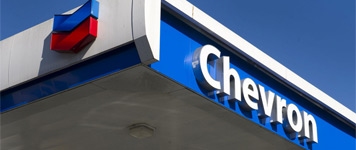
Pledges: Chevron has not yet set any targets relating to the reduction of its carbon footprint, but stated in its latest climate report that such aims will be developed before the end of 2019. Elsewhere, it is aiming to reduce methane and flaring intensity by up to 30% from 2016 levels by 2023. In 2017, it issued its sustainability strategy through contributions to the Sustainable Development Goals (SDGs) and earlier this year pledged to link executive pay to low-carbon progress.
Energy outlook: Chevron bases its energy outlook on that provided by the International Energy Agency (IEA) and has predicted that crude oil and natural gas will still account for almost half (48%) of the world’s primary energy mix by 2040. By this date, the firm believes coal will account for 13% of the energy mix, with the rest accounted for by nuclear, bioenergy and other “clean” sources.
Low-carbon investments: The company has invested in five solar projects with a combined 73MW of power capacity to date and fully owns a and a 16.5MW wind farm. It also has an equity stake in a 49MW geothermal joint venture.
Away from renewables, Chevron has invested more than $75m in R&D projects for carbon capture and storage (CCS) over the past 10 years and has funnelled $1.1bn into the Gorgon carbon dioxide injection project and the Quest project in Canada, which both aim to decarbonise fossil fuel extraction and use.
Policy lobbying: Chevron is estimated to spend $4m per year on advertising and communications to suggest that it opposes high-carbon products, climate change and rising GHG emissions – but this is reportedly matched by $28m of lobbying to weaken climate legislation.
Chevron denies this accusation and claims that it is “committed to working with policymakers to design balanced and transparent greenhouse gas emissions reductions policies that address environmental goals and ensure consumers have access to affordable, reliable and ever cleaner energy”.
It maintains that it has a “right and a responsibility to its stockholders to advocate positions on proposed policies that will affect the company’s ability to explore for and produce energy.”
Chevron claims that it spent $21.2m in 2018 on political contributions, all of which was used to “support candidates and political organizations who foster economic development, free enterprise and good governance”. Chevron notably joined the Oil and Gas Climate Initiative (OGCI) in 2018.
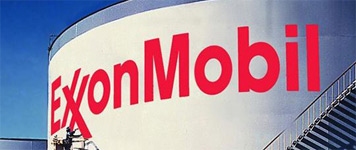
Pledges: The firm is yet to set any long-term carbon or GHG targets and has been accused by CDP of having failed to set even short-term goals. However, it is planning to reduce its methane emissions by 15% and flaring at gas sites by 25% by 2020, against a 2017 baseline.
In April 2019, the Securities and Exchange Commission ruled that Exxon shareholders would not be given the chance to vote on whether the firm should set long-term emissions targets this year.
Action so far: ExxonMobil claims to have spent $9bn on technologies to lower emissions since 2000, including carbon capture, biofuels and flare reduction. Since 2008, its net GHG footprint has decreased from 126 million metric tonnes of CO2e to 122 million metric tonnes of CO2e.
Energy outlook: ExxonMobil’s latest energy outlook predicts that global energy demands will increase by 25% by 2040. At this date, the firm believes global CO2 emissions are likely to “peak”. It has forecast a 400% growth in the solar market and a “large expansion” of the uses open to natural gas by this time, but also believes that oil will still account for around one-fifth of the global energy mix.
Low-carbon investments: One of the firm’s largest low-carbon investments is in biofuels; it is set to spend $500m on a partnership with Synthetic Genomics which will genetically engineer renewable crude oil from sunlight and carbon dioxide. The aim is to produce 10,000 barrels per day by 2025 – equivalent to 0.2% of its capacity. Elsewhere, ExxonMobil last year invested in a 250MW solar array and a 250MW wind farm in Texas, and is reportedly investing $1bn annually into other green research and development projects.
Policy lobbying: ExxonMobil reportedly spent the most on climate-focused branding last year of any oil and gas major, with its spend in this area estimated to stand at around $55m. During the 12-month period, its lobbying spend totalled $41m.
ExxonMobil claims that its team of scientists have been involved in climate change research and related policy analysis for more than 35 years, contributing to more than 50 peer-reviewed publications.
However, ExxonMobil has been dubbed by many as a key influence in preventing ratification of the Kyoto Protocol by the US, and was a founding member of the board of directors of the Global Climate Coalition, which formed in the 1990s and was composed of businesses opposed to greenhouse gas emission regulation. Since the resignation of its former chief executive Lee Raymond in 2006, it has changed its stance and now supports the carbon pricing system.
Sarah George

It was a state secret and the source of a kingdom’s riches. It was so important that U.S. military planners once debated how to seize it by force. For oil traders, it was a source of endless speculation.
Now the market finally knows: Ghawar in Saudi Arabia, the world’s largest conventional oil field, can produce a lot less than almost anyone believed.
When Saudi Aramco on Monday published its first ever profit figures since its nationalization nearly 40 years ago, it also lifted the veil of secrecy around its mega oil fields. The company’s bond prospectus revealed that Ghawar is able to pump a maximum of 3.8 million barrels a day — well below the more than 5 million that had become conventional wisdom in the market.
“As Saudi’s largest field, a surprisingly low production capacity figure from Ghawar is the stand-out of the report,” said Virendra Chauhan, head of upstream at consultant Energy Aspects Ltd. in Singapore.
The Energy Information Administration, a U.S. government body that provides statistical information and often is used as a benchmark by the oil market, listed Ghawar’s production capacity at 5.8 million barrels a day in 2017. Aramco, in a presentation in Washington in 2004 when it tried to debunk the “peak oil” supply theories of the late U.S. oil banker Matt Simmons, also said the field was pumping more than 5 million barrels a day, and had been doing so since at least the previous decade.
In his book “Twilight in the Desert,” Simmons argued that Saudi Arabia would struggle to boost production due to the imminent depletion of Ghawar, among other factors. “Field-by-field production reports disappeared behind a wall of secrecy over two decades ago,” he wrote in his book in reference to Aramco’s nationalization.
The new details about Ghawar prove one of Simmons’s points but he missed other changes in technology that allowed Saudi Arabia — and, more importantly, U.S. shale producers — to boost output significantly, with global oil production yet to peak.
The prospectus offered no information about why Ghawar can produce today a quarter less than 15 years ago — a significant reduction for any oil field. The report also didn’t say whether capacity would continue to decline at a similar rate in the future.
In response to a request for comment, Aramco referred back to the bond prospectus without elaborating.
The new maximum production rate for Ghawar means that the Permian in the U.S., which pumped 4.1 million barrels a day last month according to government data, is already the largest oil production basin. The comparison isn’t exact — the Saudi field is a conventional reservoir, while the Permian is an unconventional shale formation — yet it shows the shifting balance of power in the market.
Ghawar, which is about 174 miles long — or about the distance from New York to Baltimore — is so important for Saudi Arabia because the field has “accounted for more than half of the total cumulative crude oil production in the kingdom,” according to the bond prospectus. The country has been pumping since the discovery of the Dammam No. 7 well in 1938.
On top of Ghawar, which was found in 1948 by an American geologist, Saudi Arabia relies heavily on two other mega-fields: Khurais, which was discovered in 1957, and can pump 1.45 million barrels a day, and Safaniyah, found in 1951 and still today the world’s largest offshore oil field with capacity of 1.3 million barrels a day. In total, Aramco operates 101 oil fields.

Flames burn off at an oil processing facility at Saudi Aramco’s Shaybah oil field.
The 470-page bond prospectus confirms that Saudi Aramco is able to pump a maximum of 12 million barrels a day — as Riyadh has said for several years. The kingdom has access to another 500,000 barrels a day of output capacity in the so-called neutral zone shared with Kuwait. That area isn’t producing anything now due a political dispute with its neighbor.
While the prospectus confirmed the overall maximum production capacity, the split among fields is different to what the market had assumed. As a policy, Saudi Arabia keeps about 1 million to 2 million barrels a day of its capacity in reserve, using it only during wars, disruptions elsewhere or unusually strong demand. Saudi Arabia briefly pumped a record of more than 11 million barrels a day in late 2018.
“The company also uses this spare capacity as an alternative supply option in case of unplanned production outages at any field and to maintain its production levels during routine field maintenance,” Aramco said in its prospectus.
Aramco also disclosed reserves at its top-five fields, revealing that some of them have shorter lifespans than previously thought. Ghawar, for example, has 48.2 billion barrels of oil left, which would last another 34 years at the maximum rate of production. Nonetheless, companies are often able to boost the reserves over time by deploying new techniques or technology.
In total, the kingdom has 226 billion barrels of reserves, enough for another 52 years of production at the maximum capacity of 12 million barrels a day.
The Saudis also told the world that their fields are aging better than expected, with “low depletion rates of 1 percent to 2 percent per year,” slower than the 5 percent decline some analysts suspected.
Yet, it also said that some of its reserves — about a fifth of the total — had been drilled so systematically over nearly a century that more than 40 percent of their oil has been already extracted, a considerable figure for an industry that usually struggles to recover more than half the barrels in place underground.

Eastern Mediterranean’s energy ministers meeting in Cairo on January 14 has resulted in a turning point announcement for the region’s energy industry. Seven officials representing Egypt, Cyprus, Greece, Israel, Italy, Jordan and Palestine agreed to establish the East Mediterranean Gas Forum (EMGF) with the aim to expedite the development of hydrocarbon resources in the East Med, and transform the region into an energy hub. EMGF will be based in Cairo and will be open to new members joining in the future.
Egyptian Petroleum Minister Tarek El Molla chaired the meeting in the presence of representatives from the EU and the World Bank sending a clear message of Cairo’s willingness and readiness to play the regional energy hub’s role. The forum will support gas-producing countries by enhancing their cooperation with consuming and transitory parties in the region, taking advantage of existing infrastructure and developing further infrastructure options to accommodate current and future discoveries. In addition, it will allow the creation of a regional gas market that serves the interests of its members by ensuring supply and demand, optimizing resource development, rationalizing the cost of infrastructure, offering competitive prices and improving trade relations.
The announcement, which came at this critical economic and political time reflects the will of the countries of the region to create a framework in which big hydrocarbon companies could operate and attract multi-billion investments that are necessary for this industry. Gas produced will likely end up in Egypt for processing before being sent to international markets, due to existing reliable infrastructure.
Multilateral Political signs
EMGF formation comes to serve Europe’s old wish to diversify its energy needs through cooperating with East-Med countries via two potential European doors: Italy & Greece. Europe is still currently dependent on imports from Russia but increasing tensions between western European countries and Moscow is making this problematic. On the counterpart, gas-producing countries are searching for commercial markets for their gas exports, and the road to Europe via Egypt seems to be the most feasible. The forum can indeed push forward with the proposed 2,000-kilometer (1,243-mile) East Med pipeline, which will stretch from Israel and Cyprus into Greece and Italy to export Israeli and Cypriot gas to Europe. EMGF countries are expected to sign a construction deal for the pipeline “in a few weeks’ time”, as reported.
In addition, the forum is a landmark development for Israel, who has been admitted to a regional energy grouping for the first time and was given an official status in the region after 70 years of conflicts with the Arab world, with all what that means on the political and economic levels. Another interesting presence is that of Palestine, who is not yet a producing country but has already made a 1-TCF offshore discovery back in 2000 in the shallow Gaza waters, which could not be developed due to continuous tensions with the Israelis. Despite that, Palestinian Authority (PA) was given a place at EMGF’s table, and could pave the way into resolving the Gaza Marine issue with Egyptian meditation and support.
Absent countries to a rivalry forum?
EMGF marked notable absences from three Eastern Mediterranean gas players, including Turkey, Lebanon and Syria. The political unsteady situation in the latter could clearly explain not approaching any Syrian concerned party within the current status-quo. Turkey, a political and military player in the region, has previously opposed gas exploration offshore Cyprus in areas it considers disputed waters. Political tensions between various EMGF members and Ankara also explain why it was not part of the Cairo meeting. In addition, the fast development of the TurkStream gas pipeline between Turkey and Russia reflects Ankara’s low interest in EMGF as it is already securing its gas. The offshore section of the TurkStream gas pipeline was inaugurated on November 19th last year and will have two parallel lines: the first to deliver gas to Turkey, the second for onward sale to Europe.
As for Lebanon, who has awarded two offshore blocks (4 & 9) of his maritime waters earlier in 2018 for further exploration & production (expected to start in Q4 2019), has not yet released any official statement on EMGF matter. No information were announced to answer the many questions on whether the government has been invited to be part of the forum or not, or if it has refused because of Israel’s presence with whom there are no diplomatic nor political relations, in addition to an 860 km2 disputed offshore area. Most importantly, would Israel benefit from its presence with the EMGF countries to force a one-sided solution on the latter topic? Moreover, how would Lebanon be able to market his future gas prospects if Israel was a main player in the East-Med pipeline to Europe?
It might be true that some Turkish energy experts have started to put forward the idea of Ankara establishing a north-eastern Mediterranean gas forum with Northern Cyprus, Lebanon and Syria to export the gas through turkstream, an option which would appear genuinely as a rival to EMGF and far from being executed. Yet, post-EMGF East-Med geopolitics would not potentially be the same even before it, and the forum is expected to play a game-changing role in the region.
Lebanon Gas and Oil – Editorial Team

In west Texas last week, you could not give gas away, as prices dropped to record lows. Companies trying to offload natural gas at the Waha hub, in the booming shale oil region of the Permian Basin, found they had to pay operators with pipeline capacity to take it away.
The gas price at Waha registered a low last Thursday of minus $2.50 per million British Thermal Units and closed at minus $1.95, its lowest level since S&P Global Platts started collecting the data back in 1994.
The steep negative prices last week were in part caused by equipment failures on one pipeline system and planned maintenance on another, which made it harder to find outlets for unwanted gas. The fundamental problem in west Texas, however, is that there is a growing oversupply of gas that is a byproduct of booming crude output in the shale oilfields of the Permian Basin. That surge of surplus gas, which could continue for years, is expected to have global implications, with several companies developing projects for exporting it to world markets.
Since the start of 2016, oil production in the Permian region of Texas and New Mexico has risen by about 120 per cent, more than doubling as the rebound in crude prices encouraged a new shale development boom. But the reserves also hold large volumes of natural gas, which is extracted along with the crude. The region’s gas production has also soared by 120 per cent over the same period.

As that gas boom has shadowed oil production, it has started to strain the capacity of the pipeline network to take the gas to market. Regulations and safety considerations mean that companies with excess gas cannot simply vent it into the air or burn it all off in flares, which means they are compelled to find takers for it.
Companies with pipeline capacity available can make money both by being paid to take gas away, and by selling it to customers that want it. At the same time when prices were negative at Waha, gas at the Henry hub 650 miles away in Erath, Louisiana, was being sold for a (positive) price of about $2.67 per m BTU.
Kinder Morgan, the pipeline group, has identified building new routes for gas out of the Permian region as one of its strategic priorities, and has two projects under construction. The first, the $1.75bn Gulf Coast Express pipeline, is scheduled to come into operation in October.
Rich Redash, head of global gas planning at S&P Global Platts, said he did not expect any “significant relief” from the shortage of gas export capacity until that pipeline came into service.
Even then, he added, the growth of oil and gas production would probably mean that strains on the system re-emerged quite quickly.
As the capacity to move gas out of the Permian region increases, companies are looking for more buyers, particularly in export markets.

Tellurian, which plans to build a $15.2bn plant in Louisiana for exporting liquefied natural gas, is also developing a 625-mile pipeline from Waha to supply it.
Meg Gentle, Tellurian’s chief executive, said there would be a need for a “huge” increase in LNG export capacity as US gas production rose by an expected 20bn cubic feet of gas per day, most of it coming from the Permian.
“Even though I don’t believe those negative prices will persist, the price in the Permian is very low,” she said. “I’m assuming a little bit of the 20 bcf a day is absorbed by the US market, and the rest needs to be exported.”
Copyright The Financial Times Limited . All rights reserved. Please don’t copy articles from FT.com and redistribute by email or post to the web.

Urquhart Stewart tells New Europe that Russia could pull out of the latest agreement on cutting output, which would weaken oil prices.
Supply cuts led by the Organization of Petroleum Exporting Countries (OPEC), US sanctions against Iran and Venezuela and the possibility of a US-China trade agreement fuelled oil prices on 29 March.
May Brent crude oil futures were up 83 cents at $68.65 a barrel by 1232 GMT, set for a gain of nearly 28% in the first quarter, Reuters reported, adding that the more active June contract was up 89 cents at $67.99 a barrel. US West Texas Intermediate (WTI) futures were at $60.44 per barrel, up 1.14 cents, and on track for a rise of more than 33% over the January-March period. For the two futures contracts, January-March 2019 is the best-performing quarter since the second quarter of 2009, when both gained about 40%, according to the news agency.
Justin Urquhart Stewart, director at Seven Investment Management in London, told New Europe by phone on 29 March that oil production cuts from OPEC and non-OPEC group of producers led by Russia have been one of the reasons for the increased oil prices. But he warned that the global economy is slowing, leading to a lower demand for oil.
“We have what looks like a global slowdown. Demand is likely to weaken and Saudi cut production will have an impact. Venezuela one has been carrying on and on there is nothing new there. But I think the bigger picture is really if we get a decision on the Chinese-American trade issues. They’re indirectly linked but the mere agreement on that, you will see that reflected in the oil price as well soon after because for the increased demand for power,” Urquhart Stewart said.
OPEC and other non-OPEC producers led by Russia – an alliance known as OPEC+ – agreed in December to reduce oil supply by 1.2 million barrels per day from 1 January 1 for six months. But, according to Reuters, Riyadh is having a hard time convincing Russia to stay much longer in an OPEC-led pact cutting oil supply, and Moscow may agree only to a three-month extension. Russian Energy Minister Alexander Novak told his Saudi counterpart Khalid al-Falih when the two met in Baku this month that he cannot guarantee an extension to the end of 2019, Reuters quoted three sources as saying.
Urquhart Stewart told New Europe that Russia could pull out of the latest agreement on cutting output, which would weaken oil prices. “They weren’t exactly natural bedfellows at the best of times and I’m surprised it almost lasted this long – The enemy of my enemy is my friend. So they will have diverging requirements I think going forward and that’s not going to change,” the director at Seven Investment Management in London quipped.
On 28 March, US President Donald J. Trump called for an OPEC production boost to lower oil prices. “Very important that OPEC increase the flow of Oil. World Markets are fragile, price of Oil getting too high. Thank you!” he tweeted. But the oil markets shrugged off Trump’s latest request to scale back or reverse its output curbs. “Increasingly what he’s doing is using his twitter and cry wolf. But the more he does it, the less people believe. No, he is just coming out with populist statements,” Urquhart Stewart said, adding: “So the industry generally is becoming far more resistant to them, quite right, too.”